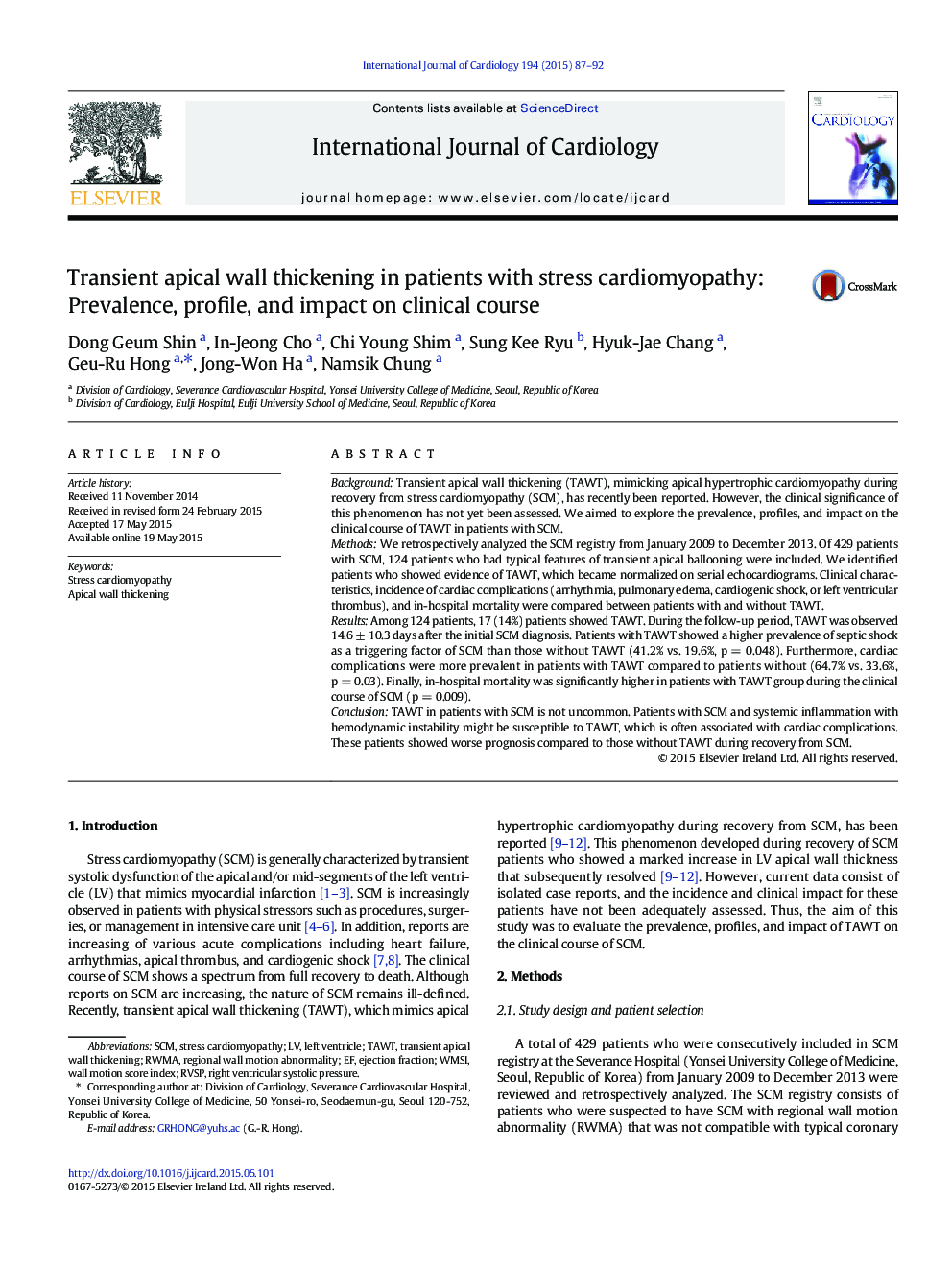| Article ID | Journal | Published Year | Pages | File Type |
|---|---|---|---|---|
| 5966521 | International Journal of Cardiology | 2015 | 6 Pages |
BackgroundTransient apical wall thickening (TAWT), mimicking apical hypertrophic cardiomyopathy during recovery from stress cardiomyopathy (SCM), has recently been reported. However, the clinical significance of this phenomenon has not yet been assessed. We aimed to explore the prevalence, profiles, and impact on the clinical course of TAWT in patients with SCM.MethodsWe retrospectively analyzed the SCM registry from January 2009 to December 2013. Of 429 patients with SCM, 124 patients who had typical features of transient apical ballooning were included. We identified patients who showed evidence of TAWT, which became normalized on serial echocardiograms. Clinical characteristics, incidence of cardiac complications (arrhythmia, pulmonary edema, cardiogenic shock, or left ventricular thrombus), and in-hospital mortality were compared between patients with and without TAWT.ResultsAmong 124 patients, 17 (14%) patients showed TAWT. During the follow-up period, TAWT was observed 14.6 ± 10.3 days after the initial SCM diagnosis. Patients with TAWT showed a higher prevalence of septic shock as a triggering factor of SCM than those without TAWT (41.2% vs. 19.6%, p = 0.048). Furthermore, cardiac complications were more prevalent in patients with TAWT compared to patients without (64.7% vs. 33.6%, p = 0.03). Finally, in-hospital mortality was significantly higher in patients with TAWT group during the clinical course of SCM (p = 0.009).ConclusionTAWT in patients with SCM is not uncommon. Patients with SCM and systemic inflammation with hemodynamic instability might be susceptible to TAWT, which is often associated with cardiac complications. These patients showed worse prognosis compared to those without TAWT during recovery from SCM.
